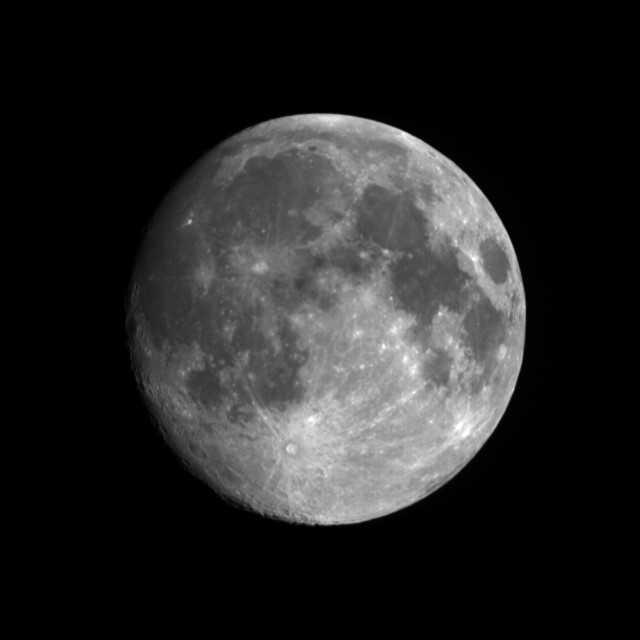Moon image from TERRA/ASTER
-Terra ASTER performed a Moon and deep space observation on August 6th 2017 [JST] for radiometric calibration
ASTER, an optical sensor onboard an Earth observing satellite “Terra”, performed a Moon and deep space observation around 08:15:45~08:51:39 [JST] on August 6th 2017 for radiometric calibration (*1), which is key for maintaining ASTER’s data quality. A calibration method using the Moon is called “Lunar calibration” (*2). This is the second lunar calibration for ASTER since ASTER/Terra was launched in 1999.
ASTER is viewing the Earth in its nominal operation; lunar calibration requires ASTER to change its viewing direction to observe the Moon. For this, a special operation was carried out, in which Terra was rotated in the pitch direction (like a back-flip or “somersault”) to capture the Moon in ASTER’s field of view.
This is an interim report of ASTER’s second lunar observation. The full analysis of the lunar calibration data is underway by Japan-US joint ASTER science team.
#1. Radiometric calibration
ASTER makes observations of the Earth surface from space. Because of the harsh environment of space, such as bombardment by high-energy particles, cosmic rays and strong ultraviolet light, space-borne sensors inevitably experience sensitivity degradation. ASTER is no exception; it has experienced sensitivity degradation during its 17 years of operation. If we did not correct the sensitivity degradation effect, quality of ASTER images would worsen due to inaccurate measured brightness in the ASTER image impacting its science mission.
To keep the brightness accuracy in ASTER data products, the ASTER science team has been monitoring ASTER sensitivity variation with multiple methods, including using the onboard calibration lamp and simultaneous observations of the Earth surface from and the space and on the ground. Through these measurements, the ASTER science team obtained calibration parameters to offset the degradation effects to ensure reliable, high-quality ASTER products for users. This activity is called “radiometric calibration”.
#2. Lunar calibration
These days the Moon is considered a good calibration target in space, because the Moon surface brightness has been very stable (for more than several 10,000 years) and satellites in space can observe the Moon without any atmospheric effects (ex. turbulence, scattering, and absorption), which sometimes adds significant uncertainty in measured values. Because of the many advantages of lunar calibration, satellites operators including JAXA, NASA, and meteorology agencies, use the Moon for radiometric calibration of satellite sensors. Recently, “SELENE”, a lunar exploring satellite operated by JAXA, obtained detailed global lunar surface brightness data (http://www.selene.jaxa.jp/). ASTER’s lunar observation data as well as its comparison with SELENE’s observation data will provide valuable information for radiometric calibration.
ASTER Moon observation requires “flipping” Terra, which is a high-risk operation and Moon observations seldom takes place. This was the second Moon observation opportunity for ASTER in its mission life. The last one was performed in 2003.


